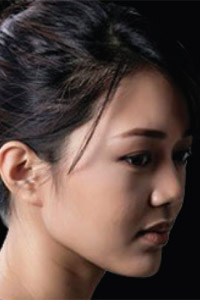Friday marked the official launch of Thailand's premiere Bangkok Art Biennale (BAB). It's been a long time coming, but for those in the dark, a biennale, in the art world, is a large-scale international contemporary art exhibition that takes place every two years in major art hubs around the world. Artworks by both renowned artists and rising stars are scattered throughout the city, adding vibrancy and sparking profound discussions about art and culture for a period of a few months.
It's big business, too, drawing in cultural capital in the form of hordes of art lovers, collectors and artists from around the world. The event becomes the face of the country's art industry, and Bangkok's first-ever edition is one of the key events that aim to promote the city as a top global tourist destination for contemporary art.
To the public, BAB so far has gone smoothly. The opening on Friday was deemed a success. The artworks, by 75 artists from 33 different countries, are genuinely interesting and well-curated, and the 20 locations, especially those inside historic temples, are really worth a visit.
As a journalist, I got to preview the event before the launch on two separate press tours. Through these tours, I witnessed the difference between those who are just doing this for the cash grab (which could potentially ruin this event), and those who actually care about the state of the art industry of this country.
Three days before the official opening, a major sponsor -- not going to name which -- arranged its very own press tour to visit all the prime locations of the Bangkok Art Biennale. They told journalists that all the artists will be present at each location to conduct interviews. Sounds great, but that never really happened.
The start of the tour was in BAB Box (which has some really cool artwork by CANAN, AES+F and Sriwan Janehattakarnkit). BAB Artistic Director Dr Apinan Poshyananda was there for a short while to explain each of the pieces in the gallery, but when he left, things quickly went down the drain. Journalists soon found out that the "guides" for the tour were not trained BAB staff, but the sponsor's own staff members. Every question directed to them was met with either "I don't know" or "Look at the papers we gave you". Of course, the information sheet they prepared was riddled with errors and mistakes.
Next, we visited the Bangkok Art and Culture Centre (BACC). It seemed as if the sponsor did not coordinate with the centre about the visit. There were no artists or curators present, and everything was still wrapped in protective plastic. Our "guides" ushered us through the hall, urging us to take photos and quickly move on. If a journalist had a question, they simply read back to us information from the official BAB guidebook (which we all had and read), sometimes making incorrect statements of their own creation.
When visiting Wat Prayoon, which has in total seven artworks, none of the artists were there as well. Taking us to view Kit Ngamsom's Turtle Religion, our "guide", didn't understand a certain statue moved by walking past a sensor, and instead hit the statue repeatedly and yelled at it to move. Another staff member desperately told the guide that it cannot be touched. She still hit it anyway. It was appalling and embarrassing to witness.
There were many more inexcusable issues that came up during the day, including some strange and blatant product promotion. So if this was how the Biennale was going to be run in the next few months, the event was bound to be a national embarrassment.
Thankfully, it was just a one-off nightmare. The next day's tour -- run by the BACC itself -- made up for the previous day. All the artworks were properly on display, and all the artists and curators were there to answer any questions by both local and international media. Everything ran smoothly, as all the staff in the centre were knowledgeable and respectful to the artworks, the artists and the event itself.
The experience of these two days got me reflecting on the current issues with the BACC. The government is still playing dirty and trying to take over the art centre (even though they deny it). If they do succeed, we can expect artworks and artists to be treated like the first day -- with no knowledge, care or respect. It may be even worse, as government bureaucrats -- especially army generals -- care or understand very little about art.
To run an international art event, as well as a national art centre, it's a callous mistake to just plop anyone in. If it's not obvious enough, art institutions and events need to be run by those experienced in the field -- just as in any other industry. When people who actually know a thing or two are in charge, you get results like on the second day, when everything went smoothly. Local and international guests become truly impressed by the organisers' collective effort, and it really does feel that Bangkok has become a top destination for contemporary art.
Apipar Norapoompipat is a feature writer for the Life section of the Bangkok Post.
